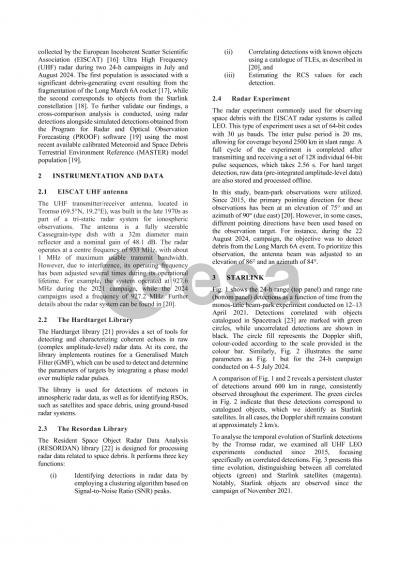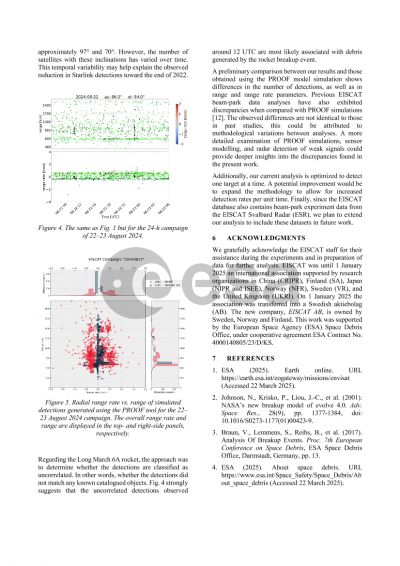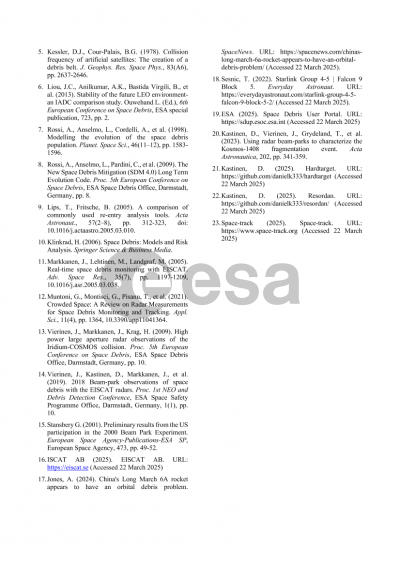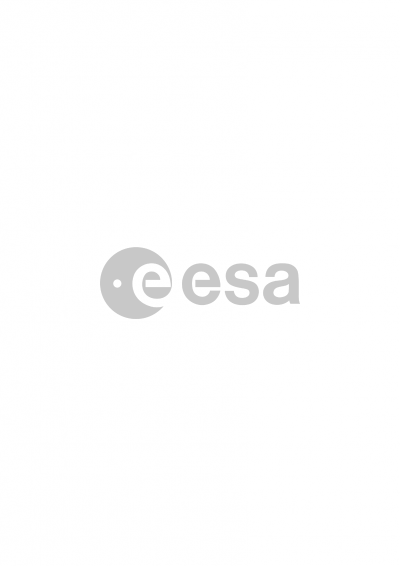Document details
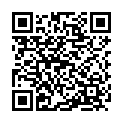
Abstract
Significant sources of space debris include derelict payloads and rocket bodies, explosion- and collision fragments of satellites and other space-borne objects. In 2024, a notable debris-generating event occurred when the Long March 6A rocket broke apart shortly after launch, creating a cloud of debris in orbit. Due to its potential impact on orbital safety, this event quickly became a priority for monitoring. Additionally, since 2019, the rapid expansion of the Starlink constellation has added a large number of satellites to low Earth orbit, making it a critical focus for space object tracking.
This study utilizes monostatic beam park observations collected by the EISCAT UHF radar during July and August 2024 to analyze the populations associated with these two groups of space objects. A correlation analysis was performed by comparing radar measurements with a publicly available TLE (Two-Line Element) catalog, allowing for the identification of radar detections linked to catalogued objects. Uncatalogued detections found near the Long March 6A object are likely fragments resulting from its breakup. Furthermore, a comparison of catalogued detections from 2024 to those from 2021 reveals an increase in Starlink satellite observations.
To further validate these findings, a cross-comparison analysis was conducted, using radar detections alongside independent detections obtained from the PROOF using the most recent available calibrated MASTER population. We also discussed here the consistency and accuracy of these detections.
Preview

